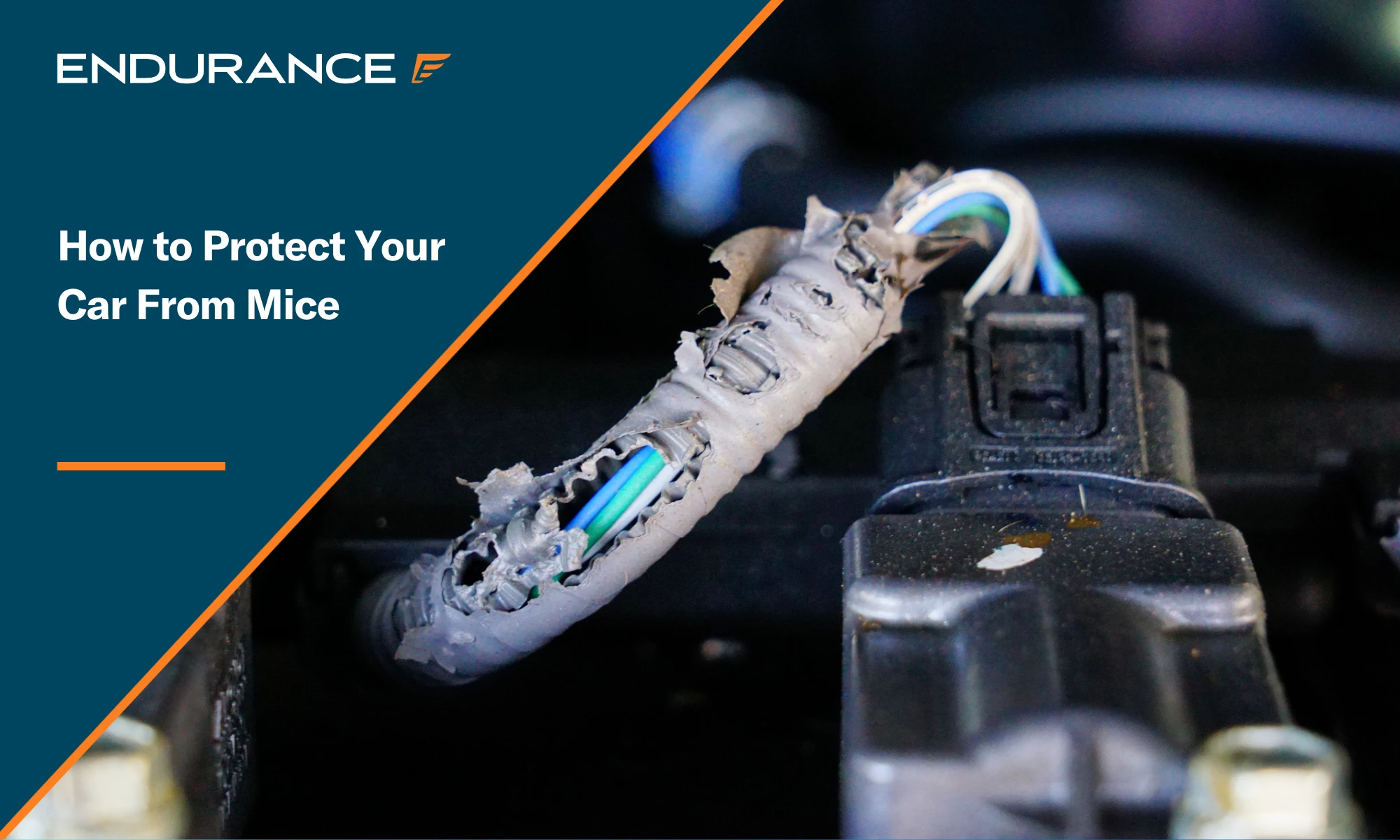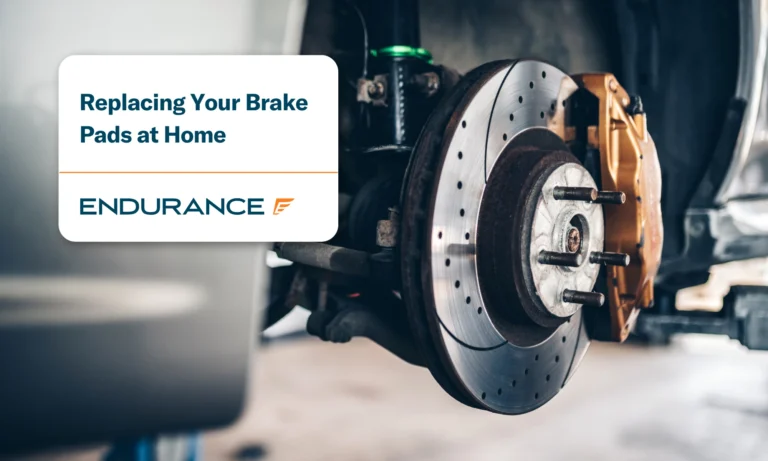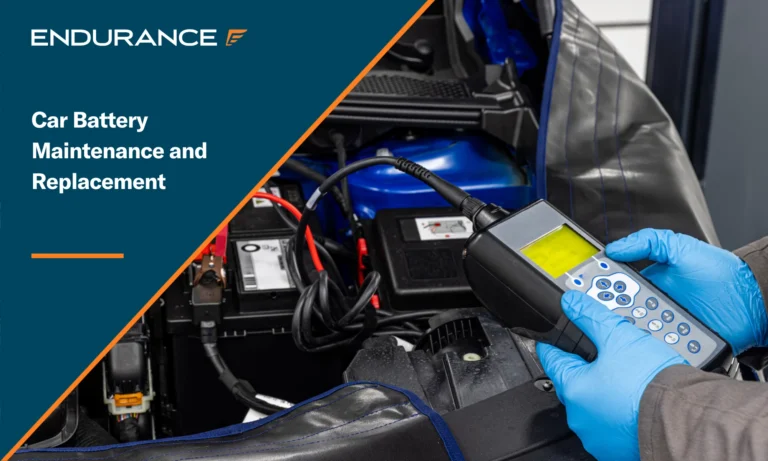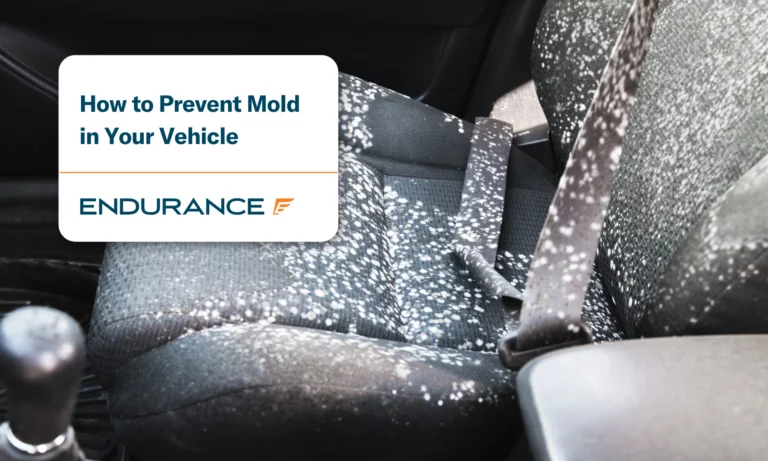How to Protect Your Car From Mice and Other Rodents

Modern automobiles are designed with many safeguards, like technology to prevent accidents, equipment to shield occupants in a collision, and components to defend vehicles from the elements. However, one thing automakers don’t build into their cars is protection against rodent infestation.
Your car’s engine bay and other critical areas are welcoming surroundings that give pests like mice and chipmunks shelter and a place to satisfy their needs to chew constantly. This activity is not only an inconvenience and a health hazard, but the gnawing of wires and other essential components can lead to expensive repairs.
Keep reading as we examine why mice and other rodents find cars tempting targets. We’ll also cover how to prevent this activity, respond to unwelcome visitors, and uncover effective deterrents.
Understanding Why Rodents Target Vehicles
Dealing with rodents in cars starts with understanding why these tiny creatures are attracted to automobiles. Keep these factors in mind:
Warmth and Shelter
Like all animals, mice and other rodents instinctively need shelter, especially during colder months. A recently driven car with a warm engine bay can be very attractive on a chilly night, especially if there’s snow on the ground. Even though residual heat may only last an hour or so, that’s enough of an invitation.
Accessible Entry Points
While a locked car may look secure, underneath, it’s anything but. The numerous small openings and crevices are the equivalent of a welcome mat, made more accessible by easy-to-climb rubber tires.
Rodents only need as little as a quarter-inch of space to gain access, according to the U.S. Centers for Disease Control and Prevention (CDC). That means that gaps around cables and wires, drainage holes, ventilation systems, and spaces between body panels are the equivalent of doorways. Open engine compartments are even more inviting.
Chewing Habits
Rodents have a continuous need to chew. This activity is a byproduct of their teeth growing throughout their lives. The constant gnawing keeps this growth in check. Unfortunately, numerous parts are at risk if this occurs while they’re in your car. Electrical wiring, plastic components, hoses, belts, and upholstery are inviting opportunities. This chewing behavior can lead to short circuits, fluid leaks, and other mechanical issues that can be costly to repair and possibly dangerous if not corrected.
Busting a Myth about Soy-Based Wiring
The switch to more environmentally friendly materials like soy-based wire casings was rumored to be why rodents chewed at electric components. However, Terminix dispels this as a myth, saying, “All the chewing lies in rodent biology.”
4 Preventive Measures: Keeping Rodents at Bay
Taking a few preventative steps can reduce the likelihood of rodents making a home in your car.
1. Park Wisely
Where you park matters to make your car less attractive to these four-legged pests:
- Avoid parking near wooded areas, tall grass, or overgrown vegetation
- When possible, park in a garage that’s well-sealed against rodent entry versus outdoors
- If outdoor parking is a must, stay away from accumulated trash or water sources like leaky faucets or water bowls
2. Seal Entry Points
Periodically inspect your car for potential entry points and seal them off:
- Check for gaps around cables, wires, and other components entering the engine compartment.
- Inspect weather stripping around doors and windows to ensure a tight seal.
- Install barriers, like metal mesh or steel wool, to block small openings.
3. Keep It Clean
Rodents have a finely developed sense of smell, reports NewScientist. Not only can they hone in on food-based aromas, but they only need 50 milliseconds to find a pesky food wrapper. That last french fry you didn’t finish can be an open invitation to a hungry mouse. The same can be said for the piece of lettuce that fell between the seats.
Effective rodent deterrence begins with removing any potential food source, no matter how miniscule. Don’t leave food (or the remnants of a meal) in your car. Throw away any food wrappings (which can retain scents) and regularly vacuum the floor and seats to remove crumbs and other minute leftovers.
4. Regular Inspections
Just like you should be checking the oil and tire pressure, get in the habit of regularly checking for signs of rodent activity:
- Examine the engine bay for droppings, nests, or the remains of chewed materials
- Look for signs of gnawing on wires, hoses, belts, or plastic components.
- Inspect the cabin, especially under the seats and in the trunk, for indicators of a rodent presence.
- Catching rodent infestation early can limit the damage that can be expensive, like replacing sensitive electronics and wiring.
Effective Deterrents: Keeping Rodents Away
Keeping the rodent problem away is far better than dealing with the aftermath. Here are some effective measures that can help.
Natural Deterrents
Several natural substances are known to repel rodents due to their strong scents:
- Peppermint Oil: Soak cotton balls in peppermint oil and place them strategically around your car. While this approach can be used under the hood, take care to prevent the cotton balls from contacting any moving parts.
- Cayenne Pepper: Carefully applied dashes of cayenne pepper can discourage rodents from taking up residence in your car.
- Dryer Sheets: Place fresh dryer sheets in your car, engine compartment, and trunk, replacing them regularly. Again, exercise caution inside the engine bay.
Light and Motion
Rodents prefer dark, quiet environments. Disrupting these conditions can help deter them:
- Keep the area around your vehicle well-lit, especially if parking outdoors.
- Consider using motion-activated lights in your garage or driveway.
- Moving your car regularly, as the vibration and change in location can discourage nesting or loosen nesting materials that may be in progress.
Electronic Devices
While pest control services and technology have advanced to include electronic rodent repellents, users report mixed results with these methods. That said, if you’re unsuccessful with the other repellent methods, then you may have nothing to lose with these devices:
- Ultrasonic Machines: These small units emit high-frequency sound waves that are unpleasant to rodents but inaudible to humans. Keep in mind that dogs may be able to hear these sounds.
- LED Strobe Lights: Some ultrasonic machines also have flashing lights to deter pests.
Always follow the manufacturer’s instructions carefully when using these electronics to deter pests.
Dealing with an Infestation: 4 Steps to Take
If preliminary signs point to a rodent infestation, it’s time to act quickly to minimize the damage and return your car to a cleaner condition by putting these action steps in place.
1. Inspection
Rodent droppings can carry disease, so before fully tackling an infestation, wear protective gear, including gloves and a face mask. Look beyond the initial trouble spot. If you’ve found signs of rodent activity in the engine compartment, thoroughly examine the passenger compartment and the trunk or cargo area. Be sure to look in storage cubbies and hidden compartments. Likewise, rodents in the cabin can also mean they’ve found a home under the hood.
2. Cleaning
Once you’ve identified the affected areas, it’s time to clean (again, wearing protective equipment is essential):
- Remove any nests or debris carefully, disposing of them in sealed plastic bags. Use a shovel to minimize contact with the remnants.
- Use a vacuum with a HEPA filter or similar air filter to clean up droppings and smaller particles.
- Disinfect all areas with an appropriate cleaning solution. Test a small area first to ensure the liquid won’t damage surfaces.
3. Repairs
Address any damage caused by the rodents:
- Inspect and replace any chewed wires or hoses, especially around your car battery.
- Check fluid levels, as rodents may have caused leaks in various systems.
- Repair or replace damaged upholstery or insulation.
4. Professional Help
For severe infestations or if you’re uncomfortable handling the situation yourself (particularly if live animals are present or you’re not into mouse traps), consider hiring a professional exterminator:
- Locate a pest or rodent control specialist with experience in automotive infestations.
- Have a mechanic inspect your car for hidden damage that may affect performance or safety.
Extended Warranties: Protecting Against Vehicle Damage
While being preventive about rodent infestation is crucial, sometimes the inevitable happens, and these critters can seriously damage your car. In these cases, an extended car warranty (also known as a vehicle service contract or auto protection plan) may be able to help, depending on the coverage.
Comprehensive Coverage
Endurance offers vehicle service contracts that include protection for:
- Electrical Systems: Coverage for repairs to car wiring and electrical components
- Car Engine Components: Protection for specific powertrain and mechanical parts
Financial Benefits
Endurance Warranty delivers peace of mind by helping manage the cost of unexpected repairs that may arise due to a rodent infestation. In addition, this coverage makes the cost of covered repairs more predictable, as you’re only responsible for any deductible. Further, monthly premium payments for an auto protection plan rather than a big hit of a large repair bill can make car ownership more predictable.
Additional Perks
Every Endurance customer receives extra perks that can make dealing with repairs more manageable:
- Roadside Assistance: Help is available 24/7 and includes towing, lock-out assistance, emergency fuel delivery, and other essential services.
- Trip Interruption Protection: Car trouble away from home doesn’t have to be overly stressful. Endurance provides a pre-defined trip interruption reimbursement for major breakdowns that occur more than 100 miles from home.
- Rental Car Reimbursement: Breakdowns don’t have to leave you stranded, thanks to a pre-set daily rental car allowance.
- Elite Benefits: Endurance customers can also activate a year of extra Elite Benefits, which include tire repair and replacement services, key fob replacement, collision repair discounts, and total loss protection. And these features are worth up to $2,000!
Be Ready for the Unexpected with Endurance
A vehicle service contract from Endurance can help you prepare for the unexpected, such as a breakdown or surprise repair bills. To learn all that America’s leading direct-to-consumer auto protection plan provider has to offer, request a FREE quote or visit our online store for instant plan and pricing details. For one-on-one help, call (800) 253-8203 to speak with an Endurance plan advisor who can answer your questions and suggest budget-friendly options.
Visit the Endurance blog for an extensive library of expert-written articles about car care, DIY maintenance and repairs, auto reviews, and more.













Dave is an automotive journalist combining a deep passion for cars, hands-on mechanical experience, and dealership insight. His writing primarily focuses on consumer auto advice and enthusiast pieces. A regular contributor to SlashGear.com and other leading automotive platforms, Dave earned his BA in Journalism from The George Washington University.